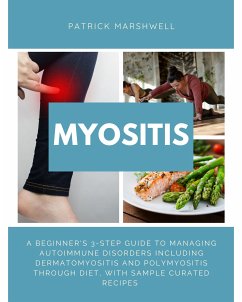There are several different types of myositis, each with its own set of symptoms. The most common type, dermatomyositis, causes a distinctive rash in addition to muscle weakness and inflammation. Inclusion body myositis typically affects older adults and causes slowly progressive muscle weakness. Polymyositis can affect people of any age and often leads to fatigue and difficulty swallowing.
While there is no cure for myositis, early diagnosis and treatment are important for preventing serious complications. Treatment typically involves a combination of medications, physical therapy, and lifestyle changes. A healthy diet is an important part of managing myositis and can help reduce inflammation, improve muscle function, and boost overall health.
In some cases, myositis may go into remission for extended periods. With proper care, people with myositis can lead active and fulfilling lives.
In this beginner's guide, we'll discuss the following in detail:
What causes myositis?
What are the three common types of myositis?
What are the risk factors for myositis?
What are the complications of myositis?
How is myositis diagnosed?
How is myositis treated?
A potential 3-step plan for managing myositis.
Managing myositis through diet and nutrition.
Living with myositis.
Let's get started.
Dieser Download kann aus rechtlichen Gründen nur mit Rechnungsadresse in A, B, BG, CY, CZ, D, DK, EW, E, FIN, F, GR, H, IRL, I, LT, L, LR, M, NL, PL, P, R, S, SLO, SK ausgeliefert werden.









